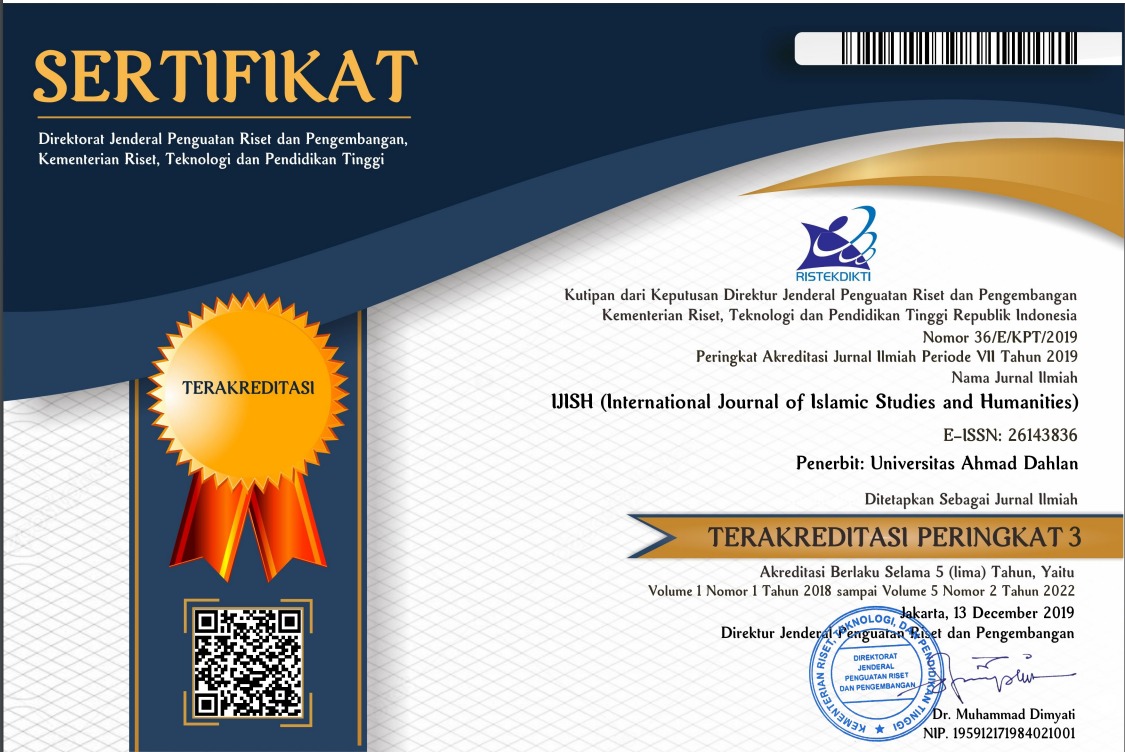Demographic Structure of the 18th Century Ottoman Rule in the Balkans: A Study of Judicial Records (Qādī Sijil) in Manastir
DOI:
https://doi.org/10.26555/ijish.v3i2.2238Keywords:
Demography, Muslim and Non-Muslim Society, The Balkans, Shari’ah/Qadi Sijils (Judicial Records), The Ottoman history, Archival materials.Abstract
Based on the Ottomans' archival materials, it has become incumbent upon the Ottoman or Balkan historian to investigate and analyze as objectively as possible the history of Ottoman rule in this region. Among all the Ottoman archives' documents, those of the judicial records (Shari'ah or Qadi Sijils) are considered to be the most important. In them, we have both a reliable objective source and a chronology of history concerning the Balkans and other regions. These records were not merely compilations of bureaucratic, administrative, and verbose data relating only to judicial, social, architectural, economic, and agricultural undertones. These facts are already explicitly stated in the Sijils themselves. It is, however, implicit facts which are of great importance and which are of enormous historical significance. The demographic structure is among the most complicated and disputed issues among the historians of religion and social sciences. Considering the objective data found in the Shari’ah Sijils, particularly to those about the most important district of the Ottomans in the Balkans, namely Manastir (today Bitola), the subject of demography will be analyzed as objectively as possible. Besides, in this article, both explicit and implicit facts will be studied.
References
Barkan, Ömer Lutfi. (1957). Essai sur les données statistiques des registres de Recensement dans l’Empire ottoman aux XVe et XVIe siècles. Journal of the Economic and Social History of the Orient, 1(1), 9–36, doi: 10.1163/156852057X00038.
Barkan, Ömer Lütfi. (n.d.). Tarihi Demoğrafi Araştırmaları ve Osmanlı Devleti. Türkiyat Mecmuası, 1–26, available at: Google Scholar.
Brands, H. W. (1967). Mustafa Akdağ, Türkiyeʼnin iktisadî ve içtimaî tarihi. Cilt 1, 1243-1453. Oriens, 20(1), 197, doi: 10.1163/18778372-02001009.
Dimovski-Colev, G. (1993). Bitolskite Evrei = Lus Didjos di Manastir. Bitola: Drustvo za nauka i umetnost, available at: Google Scholar.
El-Nahal, G. H. (1979). The Judicial Administration of Ottoman Egypt in the Seventeenth Century. Minneapolis & Chicago: Bibliotheca Islamica, available at: Google Scholar.
Inalcık, H. (1993). The Turks and the Balkans. Turkish Review of Balkan Studies, Cild, 1, 18–19, available at: Google Scholar.
Matkovski, A. (1983). Istorija na Evreite vo Makedonija. Makedonska revija, available at: Google Scholar.
Ongan, H. (1958). Ankara’nin 1 numaralı şer’iye sicili: 21 Rebiülâhır-991-Evahir-i Muharrem-992 (14-Mayıs-1583)-(12-Şubat-1584). Ankara Üniversitesi Dil ve Tarih Companyğrafya Fakültesi, available at: Google Scholar.
Özdemir, R. (1986). XIX. Yüzyılın ilk yarısında Ankara: fizikı̂, demografik, idarı̂, ve sosyo-ekonomik yapısı, 1785-1840 (Vol. 59). Kültür ve Turizm Bakanlığı, available at: Google Scholar.
Redhouse, J. W. (1890). A Turkish and English Lexicon: Shewing in English the Significations of the Turkish Terms. American mission, available at: Google Scholar.
Shari’ah Sijils. , (1873).
Shaw, S. J., & Shaw, E. K. (1977). History of the Ottoman Empire and Modern Turkey: Volume 2, Reform, Revolution, and Republic: The Rise of Modern Turkey 1808-1975 (Vol. 11). Cambridge University Press, availabe at: Google Books.
Stojanovski, A., Ǵorǵiev, D., & na Makedonija, A. (1995). Turski Dokumenti za Istorijata na Makedonskiot Narod. Arhiv na Makedonija, available at: Google Scholar.
Sugar, P. F. (1977). Southeastern Europe under Ottoman Rule, 1354-1804 (Vol. 5). Seattle: University of Washington Press, available at: Google Scholar.
Todorovski, G., & Tozi, N. P. (2000). Demografskite procesi i promeni vo Makedonija od krajot na XIV vek do Balkanskite vojni: so poseben osvrt na turskoto koloniziranje, islamiziranjeto, poturÄuvanjeto, albanizacijata i migraciite vo Makedonija. Matica makedonska, available at: Google Scholar.
Vakalopoulos, A. E. (1973). History of Macedonia, 1354-1833 (Vol. 131). Institute for Balkan Studies, available at: Google Scholar.
YILMAZÇELİK, İ. (1996). XVIII. Yüzyıl İle XIX. Yüzyılın İlk Yarısında Diyarbakır Eyaletinin İdari Yapısı ve İdari Teşkilatlanması, available at: Google Scholar.
Downloads
Published
How to Cite
Issue
Section
License
Copyright (c) 2020 Mesut Idriz

This work is licensed under a Creative Commons Attribution-ShareAlike 4.0 International License.
Authors who publish with IJISH (International Journal of Islamic Studies and Humanities) agree to the following terms:
- Authors retain copyright and grant the journal right of first publication with the work simultaneously licensed under a Creative Commons Attribution License (CC BY-SA 4.0) that allows others to share the work with an acknowledgment of the work's authorship and initial publication in this journal.Â
- Authors are able to enter into separate, additional contractual arrangements for the non-exclusive distribution of the journal's published version of the work (e.g., post it to an institutional repository or publish it in a book), with an acknowledgment of its initial publication in this journal.
- Authors are permitted and encouraged to post their work online (e.g., in institutional repositories or on their website) prior to and during the submission process, as it can lead to productive exchanges, as well as earlier and greater citation of published work.

This work is licensed under a Creative Commons Attribution-ShareAlike 4.0 International License.






